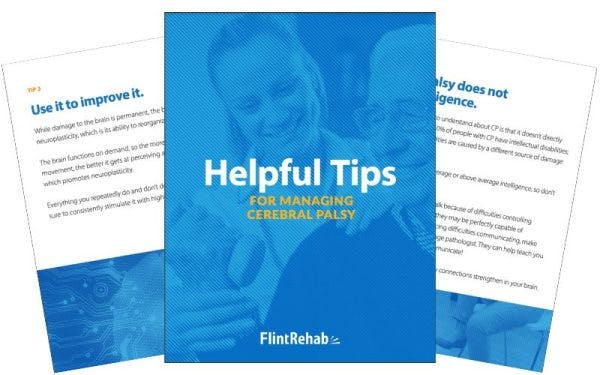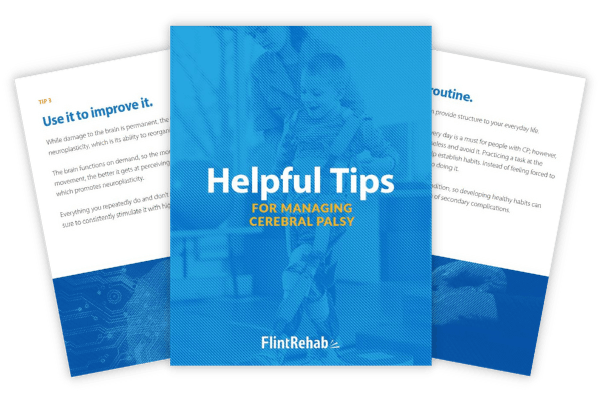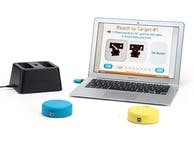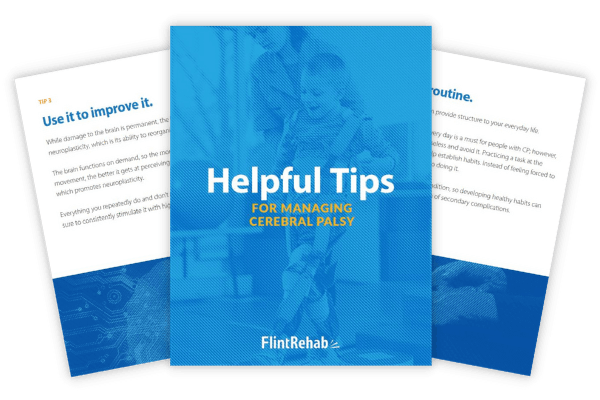Baclofen is a muscle relaxant that can help individuals with cerebral palsy manage high muscle tone. However, its effects are temporary, so it’s essential to understand how to promote more long-term benefits.
This article will discuss how baclofen works and what individuals with cerebral palsy can do to extend its effects for more long-term spasticity relief.
How Baclofen for Cerebral Palsy Works

Over 80% of individuals with cerebral palsy experience spasticity, which describes involuntary muscle contractions caused by damage to the nervous system. By using baclofen, individuals may experience temporary spasticity relief. This helps expand range of motion and reduce stiffness.
Let’s discuss how baclofen works.
Neurons are cells within the nervous system that allow information to be communicated throughout the body. They communicate with one another through electrical currents called action potentials. When a certain neuron is told to “fire”, an action potential is formed.
Baclofen affects the ability of action potentials to occur by hyperpolarizing the chemical balance in the area it is injected. This slows down the formation of action potentials, which prevents the neurons from constantly telling the muscles to contract. This helps keep the muscles relaxed and prevents spasticity.
Ways to Take Baclofen
Baclofen can be administered orally or through an intrathecal pump into the spinal canal. Depending on the location and severity of your motor impairments, one option may be more ideal than the other.
For example, individuals that only have mild motor impairments will likely benefit from oral medication, while individuals that are more severely affected will likely use intrathecal pumps, as this is a more targeted delivery method.
The effects of baclofen generally only last several hours, so those with more severe spasticity may also prefer getting an intrathecal pump implanted for continuous delivery.
Side Effects of Baclofen for CP

Some adverse side effects of using baclofen for cerebral palsy include:
- Dizziness
- Nausea
- Fatigue
- Drowsiness
- Weakness
Sudden discontinuation of baclofen use can cause withdrawal symptoms, so be sure to gradually wean off rather than quick cold turkey. Always consult with your doctor before changing the dosage of your medications.
How to Improve Mobility Long-Term

While the brain damage that caused cerebral palsy will not worsen over time, spasticity can. Therefore, individuals with CP that do not properly manage their spasticity are at risk for more severe motor impairments or muscle contractures as they get older.
The best way to use baclofen to improve mobility is to take advantage of the temporarily-induced low muscle tone and pursue intensive physical therapy.
The brain has neuroplasticity, which makes it extremely adaptive. While the brain damage that caused CP cannot be reversed, functions affected by the damage can be rewired to healthy areas of the brain through massed practice.
Baclofen will relax spastic muscles so that individuals with cerebral palsy can practice moving with correct form. It won’t feel natural or comfortable at first, but the more you practice the movement, the more your brain will strengthen the neural pathways necessary to build new habits.
Even once the baclofen wears off, the new neural connections made will allow for some of your progress to carry over.
Should You Try Baclofen for Cerebral Palsy?

Baclofen is a muscle relaxant that can be very helpful for spasticity management.
However, its effects are temporary, so it’s important to understand that baclofen will not magically treat your spasticity.
Baclofen will help temporarily relieve high muscle tone so that you can focus on practicing movements with correct form.
The more you practice moving with correct form, the stronger the neural connections in the brain for that movement pattern will become.
That’s a wrap! Hopefully, this article helped you better understand why baclofen can help individuals with CP manage their spasticity.














